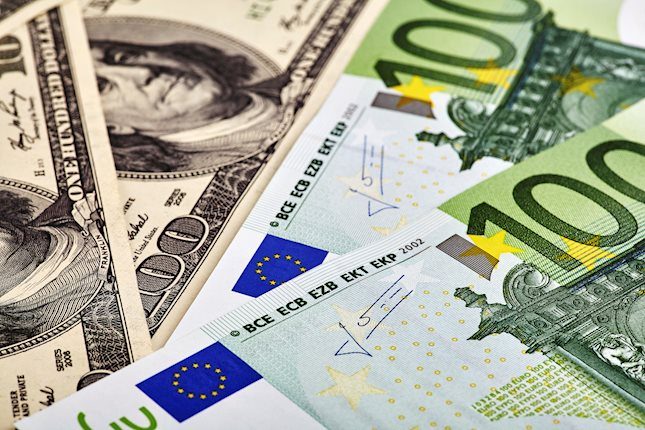- The Canadian Dollar fell further on Wednesday, shedding another half of a percent.
- Canada remains hamstrung on the economic calendar until Friday’s labor print.
- Analysts expect another 50 bps rate cut from the BoC.
The Canadian Dollar (CAD) backslid again on Wednesday, shedding another percent against the Greenback. The US Dollar continues to gain ground across the board, with a notable lack of broad-market CAD bullishness sending the Loonie into multi-week lows.
Canada remains largely absent from the economic calendar for most of this week, leaving what few CAD traders remain at the table to sit and wait for Friday’s Canadian labor update. Global financial markets continue to hinge their outlook entirely on central bank action, and the Bank of Canada (BoC) is widely expected to undermine the Canadian Dollar once more with another outsized rate cut believed to be in the pipe.
Daily digest market movers
- The CAD has declined for all but two of the last ten consecutive trading days, falling two and a quarter percent against the Greenback.
- USD/CAD has risen to its highest bids since mid-August after rallying from a 33-week low near 1.3400.
- Canadian labor figures slated for Friday are expected to show a still-sluggish pace of job creation in September, forecast to come in at only 27K compared to the previous month’s 22.1K.
- The Canadian Unemployment Rate is also expected to tick up in September to 6.7% from 6.6%.
- According to some Canadian banking analysts, the BoC is expected to deliver another rate cut for 50 bps on October 23rd.
Canadian Dollar price forecast
USD/CAD has been in a clear bullish uptrend since mid-September, piercing several major technical levels, including the 200-day Exponential Moving Average (EMA) at the 1.3600 handle. With such a one-sided bullish pattern baked into daily candlesticks, price action traders may be looking for a retracement below 1.3650 before loading up on further USD/CAD long positions to push the pair into another leg higher.
USD/CAD daily chart
Canadian Dollar FAQs
The key factors driving the Canadian Dollar (CAD) are the level of interest rates set by the Bank of Canada (BoC), the price of Oil, Canada’s largest export, the health of its economy, inflation and the Trade Balance, which is the difference between the value of Canada’s exports versus its imports. Other factors include market sentiment – whether investors are taking on more risky assets (risk-on) or seeking safe-havens (risk-off) – with risk-on being CAD-positive. As its largest trading partner, the health of the US economy is also a key factor influencing the Canadian Dollar.
The Bank of Canada (BoC) has a significant influence on the Canadian Dollar by setting the level of interest rates that banks can lend to one another. This influences the level of interest rates for everyone. The main goal of the BoC is to maintain inflation at 1-3% by adjusting interest rates up or down. Relatively higher interest rates tend to be positive for the CAD. The Bank of Canada can also use quantitative easing and tightening to influence credit conditions, with the former CAD-negative and the latter CAD-positive.
The price of Oil is a key factor impacting the value of the Canadian Dollar. Petroleum is Canada’s biggest export, so Oil price tends to have an immediate impact on the CAD value. Generally, if Oil price rises CAD also goes up, as aggregate demand for the currency increases. The opposite is the case if the price of Oil falls. Higher Oil prices also tend to result in a greater likelihood of a positive Trade Balance, which is also supportive of the CAD.
While inflation had always traditionally been thought of as a negative factor for a currency since it lowers the value of money, the opposite has actually been the case in modern times with the relaxation of cross-border capital controls. Higher inflation tends to lead central banks to put up interest rates which attracts more capital inflows from global investors seeking a lucrative place to keep their money. This increases demand for the local currency, which in Canada’s case is the Canadian Dollar.
Macroeconomic data releases gauge the health of the economy and can have an impact on the Canadian Dollar. Indicators such as GDP, Manufacturing and Services PMIs, employment, and consumer sentiment surveys can all influence the direction of the CAD. A strong economy is good for the Canadian Dollar. Not only does it attract more foreign investment but it may encourage the Bank of Canada to put up interest rates, leading to a stronger currency. If economic data is weak, however, the CAD is likely to fall.
Information on these pages contains forward-looking statements that involve risks and uncertainties. Markets and instruments profiled on this page are for informational purposes only and should not in any way come across as a recommendation to buy or sell in these assets. You should do your own thorough research before making any investment decisions. FXStreet does not in any way guarantee that this information is free from mistakes, errors, or material misstatements. It also does not guarantee that this information is of a timely nature. Investing in Open Markets involves a great deal of risk, including the loss of all or a portion of your investment, as well as emotional distress. All risks, losses and costs associated with investing, including total loss of principal, are your responsibility. The views and opinions expressed in this article are those of the authors and do not necessarily reflect the official policy or position of FXStreet nor its advertisers. The author will not be held responsible for information that is found at the end of links posted on this page.
If not otherwise explicitly mentioned in the body of the article, at the time of writing, the author has no position in any stock mentioned in this article and no business relationship with any company mentioned. The author has not received compensation for writing this article, other than from FXStreet.
FXStreet and the author do not provide personalized recommendations. The author makes no representations as to the accuracy, completeness, or suitability of this information. FXStreet and the author will not be liable for any errors, omissions or any losses, injuries or damages arising from this information and its display or use. Errors and omissions excepted.
The author and FXStreet are not registered investment advisors and nothing in this article is intended to be investment advice.
Recommended content
Editors’ Picks

EUR/USD tumbles below 1.0800 on Trump’s tariff plan
The EUR/USD pair plunges to near 1.0780 amid the renewed US Dollar demand on Friday during the Asian trading hours. Also, Donald Trump’s proposals to raise tariffs weigh on the Euro against the Greenback. Traders await the advanced US Michigan Consumer Sentiment data for November for fresh impetus.

GBP/USD faces rejection near 100-day SMA, holds above mid-1.2900s
GBP/USD edges lower on Friday amid the emergence of some USD dip-buying. The BoE’s hawkish tilt could underpin the GBP and limit losses for the major. The technical setup favors bears and supports prospects for a further downfall.

Gold appears stuck between key technical levels, what’s next?
Gold price has returned to the red early Thursday after reversing more than half of the Trump win-led 3% slide on Wednesday. Gold sellers fight back control, as the US Dollar finds its feet amid a pause in the US Treasury bond yields sell-off while awaiting the Michigan preliminary Consumer Sentiment data.

BTC touches new all-time high near $77,000 following Fed rate cut
Bitcoin price rallied and reached a new all-time high of $76,849 following the US Federal Reserve’s 25 basis point rate cut. Ethereum and Ripple followed suit and closed above their key resistance levels, hinting at a possible rally ahead.

Outlook for the markets under Trump 2.0
On November 5, the United States held presidential elections. Republican and former president Donald Trump won the elections surprisingly clearly. The Electoral College, which in fact elects the president, will meet on December 17, while the inauguration is scheduled for January 20, 2025.

Best Forex Brokers with Low Spreads
VERIFIED Low spreads are crucial for reducing trading costs. Explore top Forex brokers offering competitive spreads and high leverage. Compare options for EUR/USD, GBP/USD, USD/JPY, and Gold.